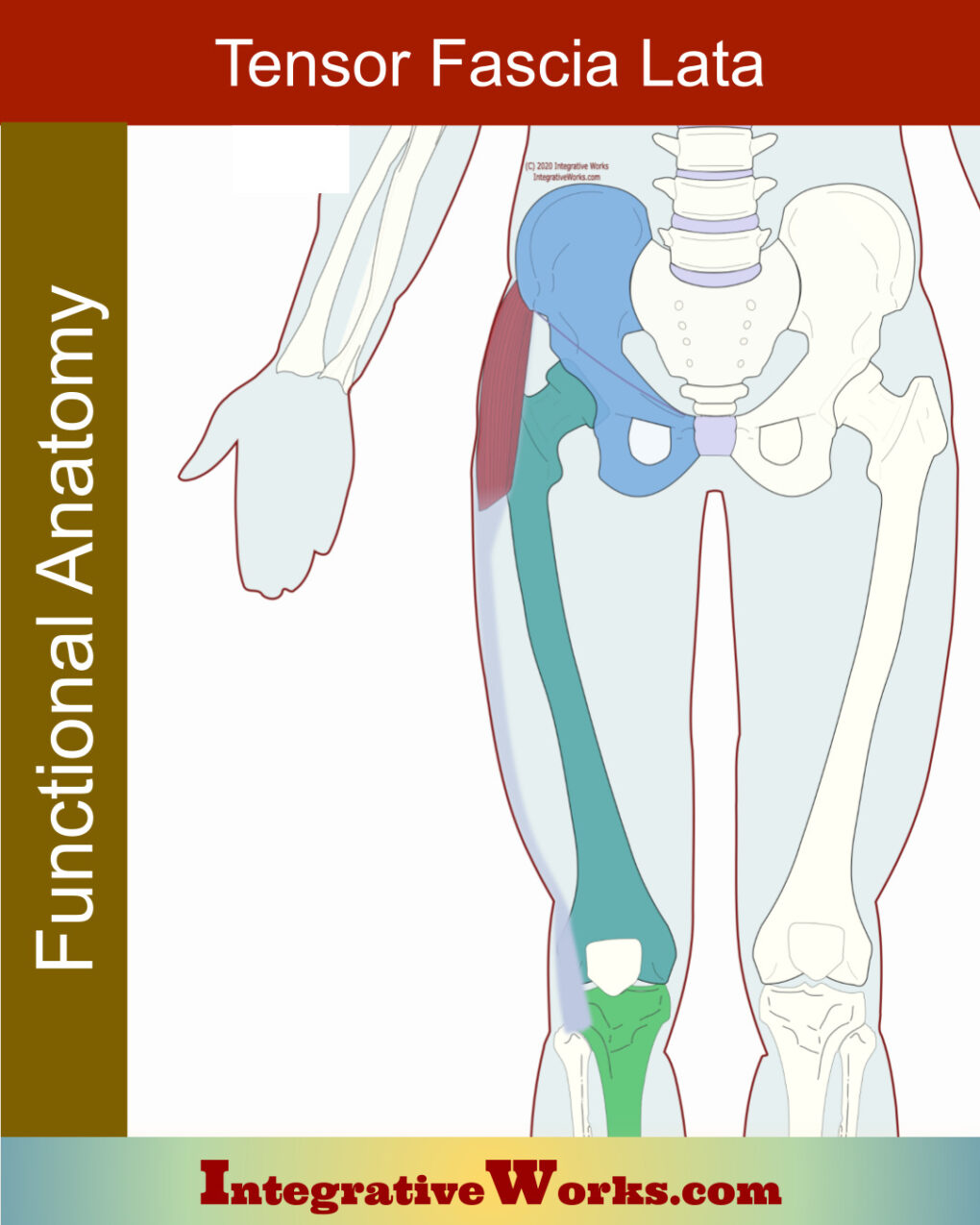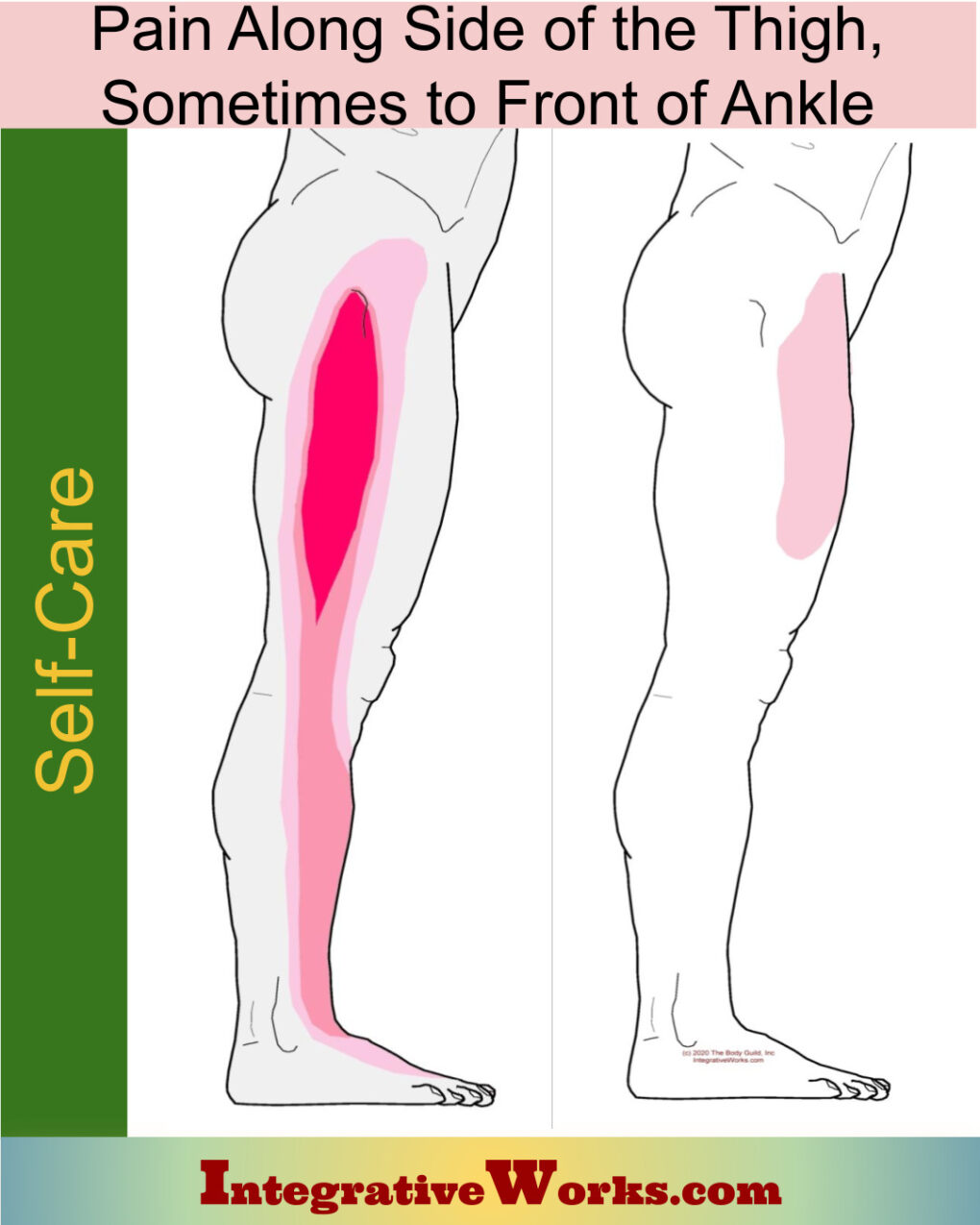How People Describe This Pain Pattern

These people complain of tingling and numbness on the side of their upper thigh. They often poke at it like it will shake it loose, or they can wake it up, like how one might shake or move your arms when they are “falling asleep.” This sensation tends to be a broad area that extends up and down the front of the quad under the corner of the hip.
Meralgia Paresthesis
This sensation comes from the lateral femoral cutaneous nerve entrapment by the tensor fascia lata muscle. It is also called Meralgia Paresthesis.
This muscle can create a tingling sensation as it tightens to stabilize the hip while standing or walking. People also complain of tingling if they sleep face down so that the hip and leg stretch out.
These people sometimes have a strip of pain down the side of their leg. Occasionally, they have a spot of pain on the side of their knee when walking or running. These are other problems created by the trigger point laden TFL.
How You Activate and Intensify This Pain Pattern
Flexing your hip for long periods, especially in tight clothing, aggravated this muscle. For example, This might occur from sitting in tight jeans while leaning forward to work at a table. It can also start from a fall or motor vehicle accident that jars the hip.
You should distinguish this pattern from other patterns. For example, degenerative discs produce spiral patterns that feel like electric shocks or a painful nail driving into the area. You can read more about the disc patterns in this post. Other trigger points refer to the upper portion of the front of the thigh.
The Musculoskeletal Anatomy Behind Your Pain
Musculoskeletal Anatomy
This post on anatomy contains standard information about the origin, insertion, function, and innervation of muscles. Additionally, it includes information on functional considerations and anomalies.
Find Related Posts
Anatomy posts have a grid of all related posts. This includes posts on pain patterns, self-care, therapy notes, NMT protocols, cranial techniques, and cases.
Getting Relief on Your Own
Clinically Proven
Self-Care Strategies
Self-Care Posts have common sections to make them easy to follow and understand:
- Activities to Avoid or Change
- Strategies for Quick Relief
- Stretches and Exercise for Longer-Lasting Relief
- Yoga Corner
Therapy Notes for Massage and Bodywork
Better Bodywork
Through Shared Expertise
This post has techniques, tips, treatment routines, and anatomy illustrations to improve the bodyworker’s approach.
Support Integrative Works to
stay independent
and produce great content.
You can subscribe to our community on Patreon. You will get links to free content and access to exclusive content not seen on this site. In addition, we will be posting anatomy illustrations, treatment notes, and sections from our manuals not found on this site. Thank you so much for being so supportive.
Cranio Cradle Cup
This mug has classic, colorful illustrations of the craniosacral system and vault hold #3. It makes a great gift and conversation piece.
Tony Preston has a practice in Atlanta, Georgia, where he sees clients. He has written materials and instructed classes since the mid-90s. This includes anatomy, trigger points, cranial, and neuromuscular.
Question? Comment? Typo?
integrativeworks@gmail.com
Follow us on Instagram

*This site is undergoing significant changes. We are reformatting and expanding the posts to make them easier to read. The result will also be more accessible and include more patterns with better self-care. Meanwhile, there may be formatting, content presentation, and readability inconsistencies. Until we get older posts updated, please excuse our mess.





